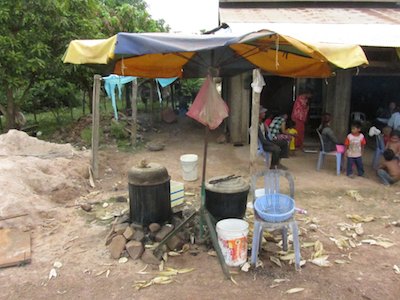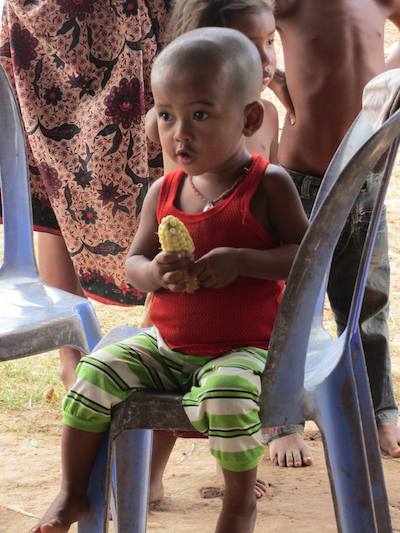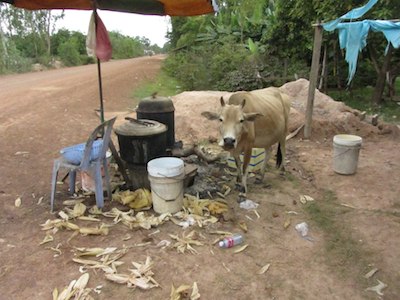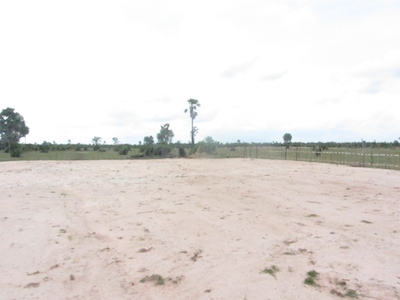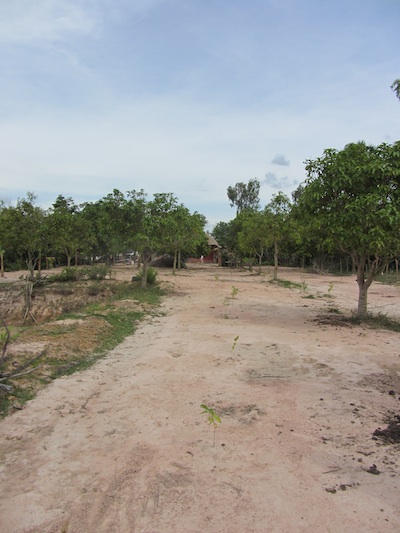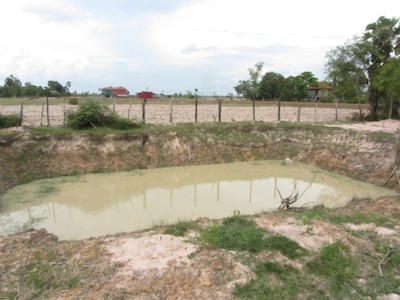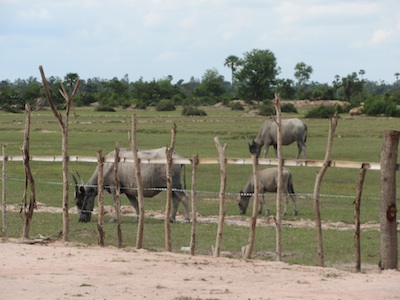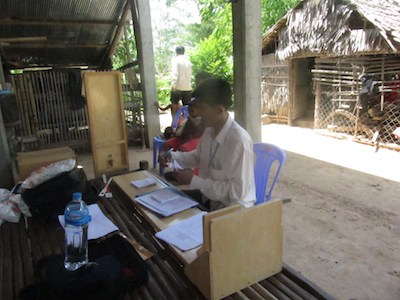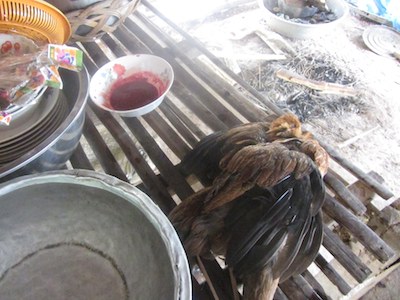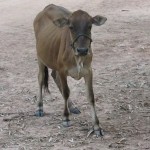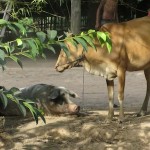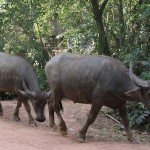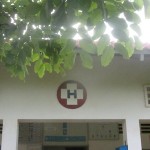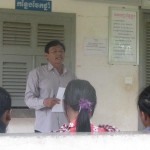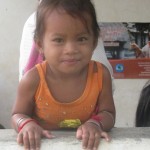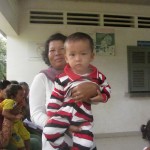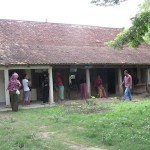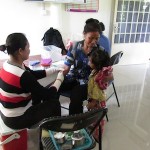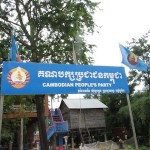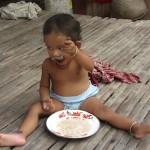This afternoon our anthropometry and hemoglobin analysis stations were set up at the home of a Village Model Farm (VMF). I was really excited because I hadn’t seen a VMF yet, AND because our VMF concept just received press as of yesterday! (Click here to read an article about FoF in the New Agriculturalist) I had the chance to speak with the VMF representative in the village of Svay Trai, and thought I would share what I learned on the blog.
The backstory: Sophal Eab used to be a wedding stylist, but when her children were old enough to attend school, she needed a job that required less travel. When the opportunity to have the VMF in her village arose, she took it. Until her farm is up and running, she sells corn for income. She purchases 500 ears of corn for $40 USD from her local market (160,000 Riel at 320 Riel/ear). She then boils all of the corn and sells it from a stand in front of her house for 500 Riel per ear (sometimes she has to sell it for less if it’s not good quality corn). Taking the cost of fuel into account, she makes roughly 100 Riel per ear, leaving her with a profit margin of anywhere from 50,000 Riel ($12.5 USD) per day to 100,000 Riel ($25 USD) per day depending on the quality of the corn available at the market.
Sophal has already impressed FoF with her dedication. Within one month she has raised the height of the land on her property to better support the beds needed to grow fruit and vegetables. She purchased wire and sourced local bamboo to make a fence to keep animals off of her farm. She also bought mango seeds so she could start growing mangoes. Luckily, she already had a fishpond, but she is considering expanding it. FoF will provide her with other seeds for her farm and fingerlings (small fish) for her pond. For now, all she knows is that she has to grow a variety of fruit and vegetables and follow the guidelines given to her by HKI and FoF, but she is looking forward to her training. She hopes to grow enough of her own corn so that she can increase the profit margin of her corn stand by not having to purchase corn from the market.
The VMF will play a very important role in FoF. Each village will have a VMF, and the VMFs in the aquaculture villages will also have a fishpond. The VMF representative will be a woman who receives training and inputs as part of our intervention. She will learn about homestead food production (HFP), aquaculture, and sustainable agricultural practices. There will be a marketing component to her training that will include information on how to plan the planting and harvesting of crops according to the seasons (of which there are 2 here – wet and dry), how to price crops, how to pick a good market to sell her produce, and how to form a marketing group to share information with VMF representatives from other villages. For instance, the marketing group may discourage women from growing morning glory (a common leafy green vegetable here) because it can be grown anywhere and with little input, so it doesn’t fetch a good price at the market. There will also be gender-specific training, as one of our goals is to empower women by improving both their health and their opportunities for income. The VMF representative will teach the FoF households in her village how to use their new farms and fishponds. Her knowledge will be e a local resource for other households in the village. She will be monitored every 4 months by FoF to see how her farm, her fishpond, and her “students” (the other FoF households in her village) are doing.
There is also a nutrition education component of our project that is being carried out by Village Health Volunteers (VHVs). The details, however, are another story for another day.

